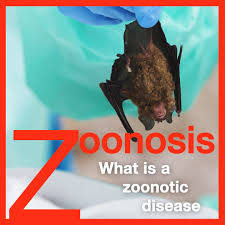Introduction
Zoonosis refers to diseases that are transmitted from animals to humans. These diseases can be caused by viruses, bacteria, parasites, and fungi, and they represent a significant portion of all newly identified infectious diseases as well as many existing ones. With increasing interactions between humans and animals, understanding and controlling zoonotic diseases have become crucial for public health.
Types of Zoonotic Diseases
There are several types of zoonotic diseases, each with its transmission routes and impacts:
-
Viral Zoonoses: These include diseases like rabies, which is transmitted through animal bites, and influenza, which can be passed from birds or pigs to humans.
-
Bacterial Zoonoses: Examples include salmonellosis, often contracted through contaminated food, and anthrax, which can be spread through contact with infected animals or animal products.
-
Parasitic Zoonoses: Diseases such as toxoplasmosis, which is transmitted through cat feces, and echinococcosis, which can be spread by dogs and other canines, fall under this category.
-
Fungal Zoonoses: These include diseases like ringworm, which can be contracted from direct contact with infected animals.
Causes and Transmission
Zoonotic diseases can be transmitted in several ways:
- Direct Contact: Direct physical contact with an infected animal, its tissues, or body fluids.
- Indirect Contact: Contact with areas where animals live and roam, or objects contaminated with pathogens.
- Vector-Borne: Through vectors such as mosquitoes, ticks, and fleas that carry the pathogen from animals to humans.
- Foodborne: Consumption of contaminated food products, such as undercooked meat or unpasteurized milk.
- Waterborne: Contact with or consumption of water contaminated with animal waste.
Impact on Public Health
Zoonotic diseases have significant implications for public health:
-
Epidemics and Pandemics: Zoonotic diseases have the potential to cause large-scale outbreaks, as seen with the H1N1 influenza and COVID-19 pandemics.
-
Economic Burden: The control and treatment of zoonotic diseases can place a substantial financial burden on healthcare systems and economies.
-
Food Security: Zoonotic diseases can impact livestock health, leading to food shortages and increased prices.
-
Biodiversity and Ecosystem Health: These diseases can affect wildlife populations and disrupt ecosystems.
Prevention and Control
Preventing and controlling zoonotic diseases require a multidisciplinary approach, often referred to as the One Health approach, which integrates human, animal, and environmental health strategies. Key measures include:
-
Surveillance and Monitoring: Implementing robust systems to detect and respond to zoonotic disease outbreaks early.
-
Vaccination: Vaccinating animals and, where applicable, humans to prevent the spread of zoonotic diseases.
-
Public Education: Raising awareness about zoonotic diseases, their transmission, and prevention methods among the public.
-
Hygiene and Sanitation: Promoting good hygiene practices, such as regular hand washing and proper food handling, to reduce the risk of infection.
-
Vector Control: Implementing measures to control vectors like mosquitoes and ticks that transmit zoonotic diseases.
-
Regulation and Policy: Establishing and enforcing regulations on wildlife trade, animal husbandry, and food safety to minimize zoonotic disease risks.
Milan Safety's Role
At Milan Safety, we are committed to enhancing public health by promoting awareness and preventive measures against zoonotic diseases. Our initiatives include:
- Educational Campaigns: Conducting awareness programs to educate communities about zoonotic diseases and their prevention.
- Safety Training: Providing training to healthcare professionals and the general public on zoonotic disease management.
- Collaboration: Working with governmental and non-governmental organizations to support One Health initiatives and improve surveillance and response systems.
Conclusion
Understanding zoonosis is crucial for safeguarding public health in our increasingly interconnected world. By adopting a holistic approach that integrates human, animal, and environmental health, we can effectively prevent and control zoonotic diseases, ensuring a healthier future for all.
About Milan Safety
Milan Safety is dedicated to promoting health and safety through comprehensive safety solutions and awareness programs. We support initiatives to enhance public health and well-being, including efforts to understand and control zoonotic diseases.
For more information, visit Milan Safety.
Alnoor Gadiya
Milan Safety
